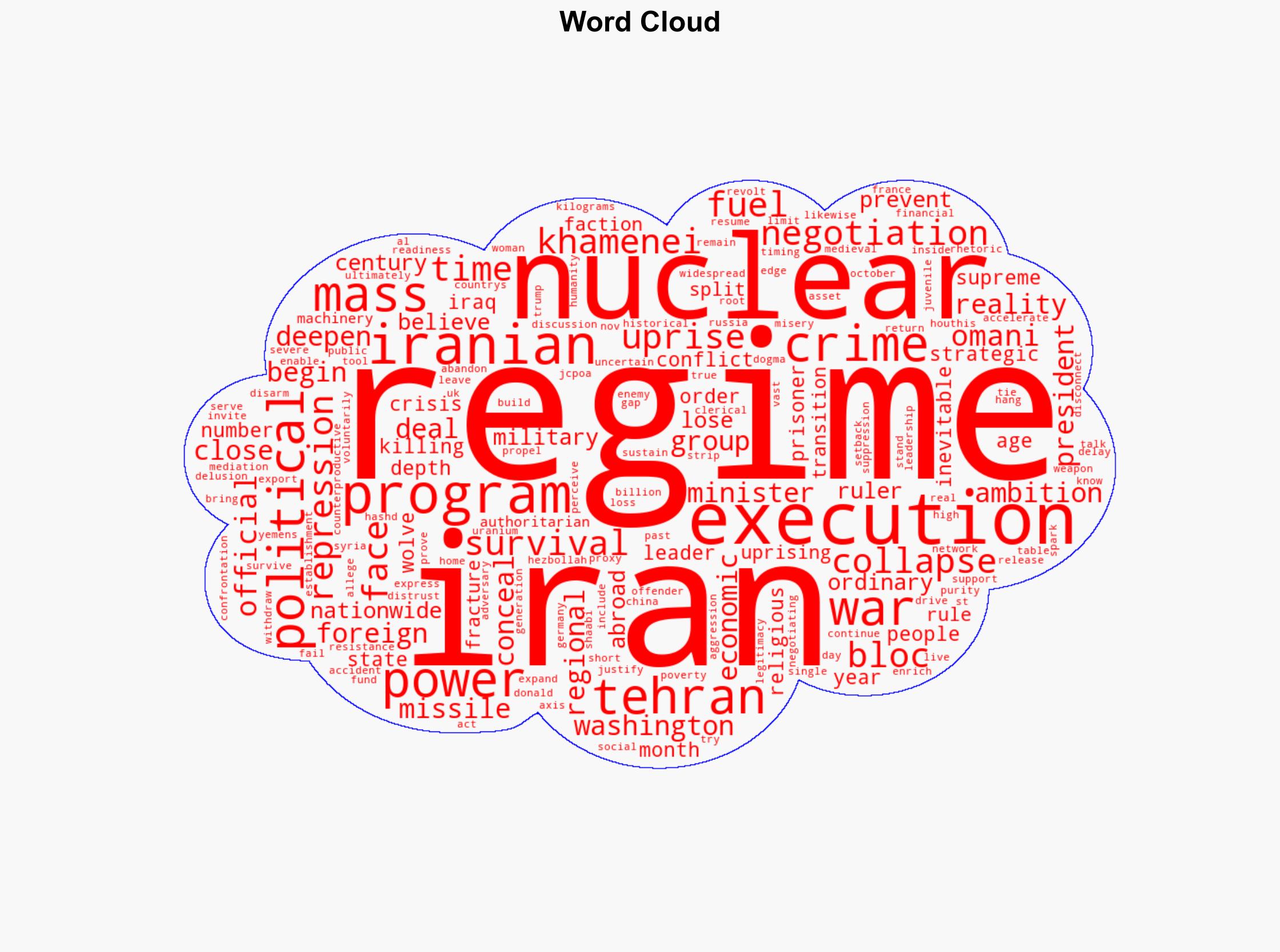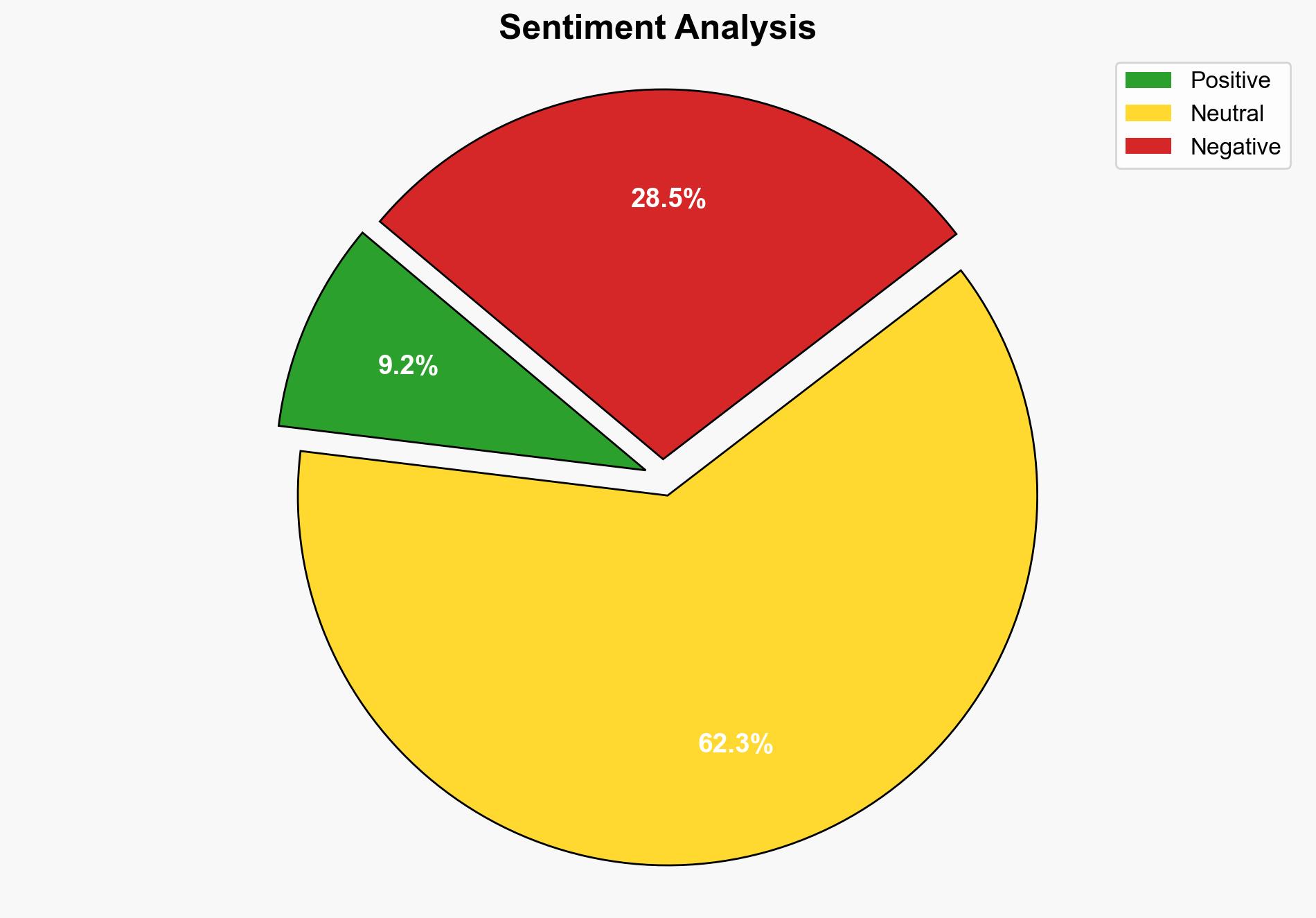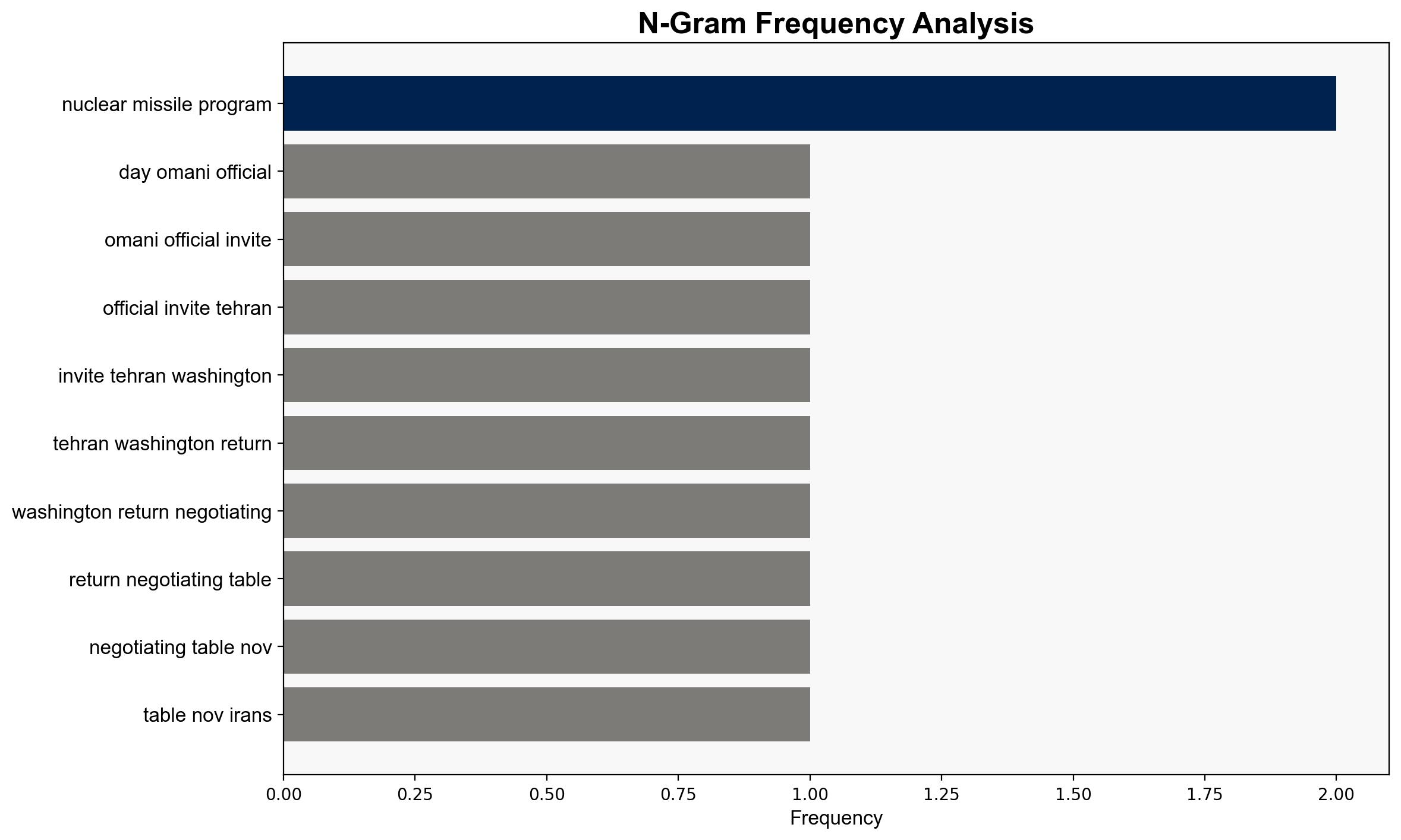Iranian regime on brink of collapse amid internal discontent and power fractures – Wnd.com
Published on: 2025-11-10
Intelligence Report: Iranian regime on brink of collapse amid internal discontent and power fractures – Wnd.com
1. BLUF (Bottom Line Up Front)
The Iranian regime is experiencing significant internal discontent and power fractures, raising the potential for collapse. The most supported hypothesis suggests that internal pressures and factional struggles are leading to a critical point, with a medium to high confidence level. Recommended action includes monitoring internal dissent and external negotiations closely, while preparing for potential regional instability.
2. Competing Hypotheses
1. **Hypothesis A**: The Iranian regime is on the brink of collapse due to internal discontent, economic hardship, and factional power struggles. This hypothesis is supported by reports of widespread poverty, increased executions, and internal conflicts described as a “war of wolves.”
2. **Hypothesis B**: The Iranian regime will maintain stability despite internal challenges, using repression and strategic negotiations to manage dissent. This is supported by the regime’s historical resilience, ongoing nuclear negotiations, and control over regional proxies.
Using ACH 2.0, Hypothesis A is more supported due to the convergence of internal pressures and the regime’s apparent desperation indicated by increased executions and factional infighting.
3. Key Assumptions and Red Flags
– **Assumptions**: Hypothesis A assumes that internal discontent will outweigh the regime’s capacity for repression. Hypothesis B assumes the regime’s historical resilience and negotiation tactics will suffice to maintain control.
– **Red Flags**: The source’s potential bias against the Iranian regime and lack of corroborating evidence from other independent sources could skew analysis. The assumption that increased executions directly correlate with regime instability may overlook other strategic motives.
4. Implications and Strategic Risks
The potential collapse of the Iranian regime could lead to regional instability, affecting global oil markets and increasing the risk of proxy conflicts. Cybersecurity threats may rise as factions vie for power. Geopolitical tensions could escalate, particularly if nuclear negotiations fail or are perceived as a cover for advancing nuclear capabilities.
5. Recommendations and Outlook
- Enhance intelligence collection on internal Iranian dynamics and factional alignments.
- Prepare contingency plans for regional instability, including potential refugee flows and increased proxy conflicts.
- Scenario Projections:
- **Best Case**: Successful negotiations lead to de-escalation and gradual reform.
- **Worst Case**: Regime collapse triggers widespread violence and regional conflict.
- **Most Likely**: Continued internal strife with sporadic unrest, but regime maintains control through repression.
6. Key Individuals and Entities
– Ali Khamenei
– Hassan Rouhani
– Mohammad Javad Zarif
7. Thematic Tags
national security threats, regional focus, geopolitical instability, internal dissent





